Headset
Headsets are often referred to as hands-free. These electronic equipment are used to connect with your computers, laptops, and handsets. This enables the user to listen and reply to messages and calls without actually requiring to hold the device. At first, these devices were mostly used for customer or technical support services. This allowed them to converse with the customer while entering the details in their system. But nowadays, people use headsets while playing multiplayer online games or working in gyms. The devices enable them to communicate with other players in the game while playing the game using the keyboard and the mice. Types of HeadsetThere are several types of headsets available in the market, depending on the need of the user. Mono and stereo Headset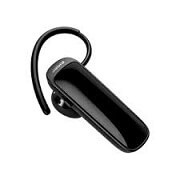
There are two types of headsets depending on the number of earpieces. The single earpiece equipment supports the same audio channel for both ears, while the double earpiece headsets can either have a different audio channel that supports stereo sounds. It is better to use a single earpiece headset when you are outdoors as they also provide an idea of the surroundings. You can be aware of the outdoors. When you want to completely avoid the surrounding noise, it is preferable to use a double-earpiece headset. Microphone Headset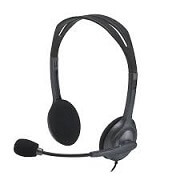
This microphone has an additional arm attached to the earpiece. This additional arm can either be an external microphone or a voice tube. The microphone is located in the front of the microphone arm. The voice tube earphone has an inbuilt microphone. In this particular design, the microphone is located in the earpiece only and does not require an additional arm. It has a tube-like structure responsible for carrying sound to the microphone. Most earpieces with an external microphone are omnidirectional; that is, they can receive sound from all directions or noise cancellation. Noise cancellation is a feature in the earpiece that eliminates the noise from the surrounding. Thus, providing better-quality sound. In noise cancellation-enabled microphones, the microphone used is bi-directional. The microphone can receive sound from two angles, either from the front or the direct opposite of the microphone. The noise-canceling microphone picks up the sound from the user's proximity only, while omnidirectional microphones can also pick up the surrounding noise. Headband Microphones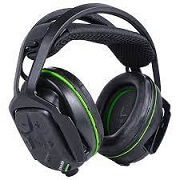
This headset can be worn over the hand. They have a similar structure to a headband. This headset can be worn over the head or the back of the user's neck. They are also known as backwear headsets. Some headsets can be over the ear only. They do not have a headband structure; instead, they have an earloop structure so they can comfortably wear over the ears. They have soft hooks and are also known as over-the-ear headsets. Then there are convertible headsets. They have pieces detached or attached from the headsets and can be worn accordingly by assembling or re-assembling those parts of the headsets. Some headsets can be worn under the chins, though very few people use them. Most stenographers wear this equipment. Earpiece Headset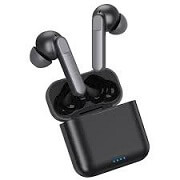
The earpiece can either be worn in one ear or both ears. Generally, there are three styles of earpiece available in the market:
Headphone compatibility and pin alignment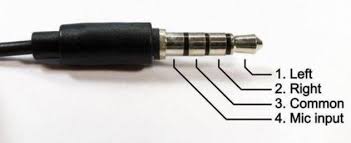
It is impossible to connect all the headsets with all the models of mobile phones available in the market. Most of the headsets are connected to your devices using a standard jack. The pin of the headset can be different depending upon the telephone make and manufacturer. If the user wants to ensure that the headset can pair with our device, you will have to check that they have similar pins and the proper alignment. Some adapters also have additional pieces that enable the user to mute the earpiece or switch between the handset and headset. Telephone AmplifiersIn the previous model of mobile phones, the impedance of the original handset was different from the headset in the market. So, to match the impedance of the headset with the handset. They require an additional amplifier. The amplifiers have a particular alignment of the pins located. This alignment matches the pin alignment in the handset adapter. It is used to connect the headset to the handset and amplifies the sound for the microphone or from the loudspeaker. In most amplifiers, the users are provided with controls that enable them to control the microphone's sound or the loudspeaker attached to the handset. Some may even provide additional features, such as a mute function or a switch that can be used to switch between the handset and the headset. They require separate batteries. The headset with telephone amplifiers has AC adapters and batteries to charge them. Connection types of headsetQuick Disconnect CableMost headsets have a cable that can be directly connected to your handset. This does not require you to remove the headset to connect it to your device. Handset Lifter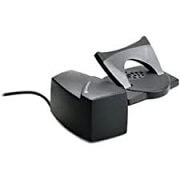
This device enables the user to replace the need for a handset to switch off or on from the device. A headset lifter is usually connected to a wireless headset. They enable the user to connect the cordless headset to primitive desk phones. They enable the user to connect with a desk device to a wireless headset and control the handset without requiring to sit near it. Some phones had a mechanical switch that was used to perform switchhook operations. But with the handset lifters, it became possible to use the headset remotely with such phones too. It provided additional functionality, allowing the user to attend or terminate the call remotely on a desk device. The headset's base station interface works with the handset lifter and determines the action that is to be performed, that is, whether to lift or replace the handset. The use of handset lifters is considered outdated by most technical professionals, as the technology was available before the introduction of headset lifters. Many devices, such as mobile phones and modern IP phones, don't have different circuits for performing switchhook operations. Some More HeadsetsGaming Headset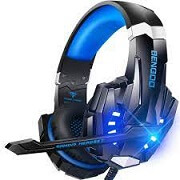
A gaming headset comes with game-oriented graphics and a microphone attached. The microphone is attached to the left earpiece. These handsets are usually used while playing online multiplayer games that require sound or involve chatting without players. With standard 3.5mm jack and TRS connectors The computer headsets have two types of connections:
3.5 mm JackThe 3.5 mm jack is the standard for the audio jacks used to connect to the device's audio port. These computer headsets have two 3.5mm connectors. A connector is used for connecting with the microphone jack, while the other connector is responsible for connecting the system's headphone or speaker jack. The connection between the computer headset and the system is made via the sound card installed in the motherboard of the system's CPU. The card is responsible for converting digital signals into analog signals from the headset. USB computer HeadsetThe user can connect these headsets to the system using a USB port instead of an audio jack. The headset conversion of audio into electrical signals. These headsets have a control unit that is responsible for this conversion. Gaming headsets are designed specifically for the gamer. It has some additional features that can benefit the gamer. They are designed to make the game sound clear by eliminating the surrounding noise. There are different sound modes for providing a better gaming experience. The lag is minimal. They are given aesthetic designs inspired by popular games or graphics and RGB lighting. The microphones can be detachable. Mobile Headsets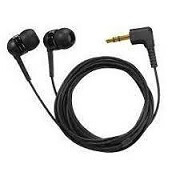
Cellular phone headsets are hands-free as they eliminate the need to hold the handset in hand. In the older mobile phone models, there was a single earpiece with an inbuilt microphone connected to a cable. They are used to playing music on mobiles. Attaching the headset to listen to the radio in the handsets was necessary. Most manufacturers provided stereo earphones with a microphone. The user can buy the headset from third-party manufacturers, also. These headsets may have better sound quality or some other additional features. The wireless headsets are purchased separately by the user. Mobile headsets are available in various designs and come in different wearing styles. Some headsets can be worn behind the neck, over the head, or the ear. Then there is also a lightweight earpiece that fits in the ear canal of the user. Some of the mobile headsets also have standard 2.5mm plugs. The handsets have a 3.5mm jack, so if the user wants to connect to the phone audio jack, they must purchase an adapter. You cannot use a USB headset to connect the mobile phone directly, as there are no USB ports available on the device. In most mobile phones, the manufacturer provides a standard 3.5mm jack to connect the headset directly to the device. Some companies manufacture models with a different pin alignments. This gives them a monopoly over the mobile accessories required for the model. Some devices have OMTP or CTIA plugged into the device. In such a case, the user should check the device setting and ensure the alignment type in the mobile phone before purchasing the headset. Bluetooth Headset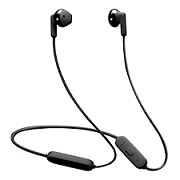
Many wireless mobile headsets use Bluetooth technology. Many laptops, computers, and mobile phones use BT to connect with different devices without requiring a wired connection. Bluetooth version 1.1 allows the user to transmit voice calls and play music or video over the headset. If the user wants to play audio files on the stereo, then the cell phone and the headset must have the A2DP profile. Wireless Headset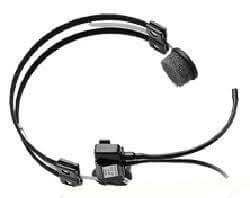
In 2019, the wireless headset became quite popular for personal and business use. There is a variety of wireless equipment available in the market. The difference can be based on the technology required to connect to the handset or the application or management of the headset. The first wireless headset was developed jointly by NASA and Plantronics. Developing the wireless headsets facilitated communication between the astronauts during the Apollo mission program. Digital Enhanced Cordless Telecommunications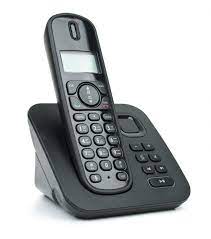
DECT is a standard for cordless telephones. It is a headset that uses a particular range of frequencies to facilitate communication among the user. The range lies between 1.88 and 1.90 GHz ( European standards) or between 1.92 to 1.93 GHz (US standards). Different countries have different standards for the bandwidth of operation of the DECT. Most frequencies in the bandwidth are already registered for wireless audio transmission. There are several profiles of Digital Enhanced Cordless Telecommunications, the most frequently used profile is the Generic Access profile. This profile is mostly used to communicate between the base station and the DECT headset. This is a common platform that allows the user to communicate between two devices manufactured by different manufacturers. For example, if one user had a Panasonic DECT, he could communicate with another user with a Siemens DECT handset. Depending upon the profile of the DECT, various manufacturers such as Plantronics, Siemens, and Jabra developed and released wireless headsets that enable the device to pair with the Generic Access Profile DECT telephones. This allowed the user to connect the DECT phones with the DECT wireless headset of their home. Then the user can answer the call from any part of the room. The user can enjoy wireless communication using the headset. 2.4 GHz Headset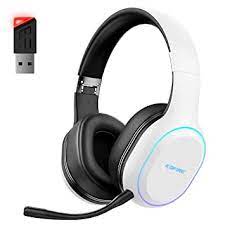
The range of frequencies for the DECT handset was predefined and varied from country to country. So the manufacturer required different handsets for different countries. The developers developed a headset that could be used with all the products. The wireless headset used the 2.4 GHz RF instead of the 1.89 to 1.9 GHz in DECT. This band of frequency is reserved for wireless communications in most countries. This made it possible to produce a device that could be sold in almost all countries. The issue with the frequency was that 2.4 GHz is the base frequency for all the wireless transmissions for WiFi, Wireless LAN, or Bluetooth. This makes the particular bandwidth very query causing issues such as delays in transmission and making the sound in the communication vulnerable to interference. Another issue was that 2.4 GHz headsets do not allow users to talk directly with any other cordless telephone device. Therefore an additional unit was required with these headsets. The function of this unit was to produce the function. The voice message or signals are transmitted to the headset from the telephone unit via a base station. This was inconvenient as the user had to carry both the headset and the station base. Some headset models come with a lifter that automatically disconnects the headset with the handset. The user just had to lift the headset while pressing a button available on the headset. Using Bluetooth in HeadsetIt was a revolutionary technology widely used by devices to remotely connect to share data or for short-distance voice transmission. It was used for data and voice transmission for a long time, but the issue was that it drained the device's battery rather quickly during data transmission. So, it is no longer preferred for sharing data but is still popular for voice transmission. It is commonly used for connecting Bluetooth headsets to the user's handset. The handset should be in the vicinity of the user. It can easily connect to the device in the pocket of the user. Initially, there were two types of Bluetooth headsets available in the market. The first was the device that used Bluetooth v1.0 and the other used v1.1. The Bluetooth headset had a single earpiece that was used to access the Bluetooth profile of the headset. It depends upon the operating system of the phone whether the earpiece will be able to play music or not. These earpieces can either play music of very low quality. They were only suitable for voice calls. Some earpieces were not able to play music at all. Headsets with the A2DP profile were introduced. These were able to play stereo music, and the quality of the music was considerably good. Some headsets with A2DP profiles provided additional functions. They disabled the microphone function while playing music. When you pair these headsets with a desktop using Bluetooth, it disables either the stereo or the microphone function of the earpiece. Bluetooth Wireless Desktop Headset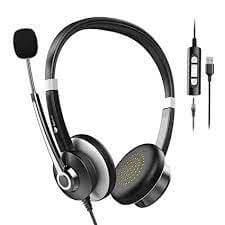
Some desktop devices also use Bluetooth to connect with the desktop. This single device enabled the user to communicate with a desktop and both mobile and telephone simultaneously, and the user had to use the device with a multiple-point Bluetooth headset. It had a base station that allowed the device to connect to the telephone line cables. It is attached to the computer using the sound card in the device. It allowed the user to connect the Bluetooth headset by pairing up with the base station or using the telephone cable to connect to the telephone or the computer and use VoIP communication. Some Bluetooth headsets use Class 1 Bluetooth with the base station. This enables the user to facilitate communication over a greater distance. The range of connection is about 33 feet when the user uses the Class 2 Bluetooth headset but it increases nearly to 100 feet on using the Class 1 Bluetooth headset. Still, many manufacturers preferred using Class 2 Bluetooth with the base station to connect the devices. This restricted the range of connection to about 33 feet only. Bone Conduction Headset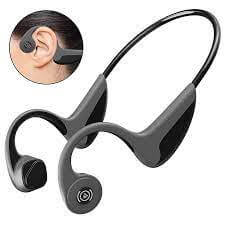
Bone conduction headphones work differently from normal headsets or headphones as the sound is transmitted to the inner ear through the bones of the skill. It allows the user to listen to the sound without blocking off the ear canal. The transmission of the sound signals happens continuously when the user uses the bone conduction headphones. The headset vibrates the bone, especially the bones of the skull. These headsets are not for public use as it is very difficult for a normal individual to differentiate between the sound transmitted by the bone through the headset and the sounds received through the ear canal. Sometimes the intentional transmission through the bones is done so that the person can use them with normal hearing. However, this headset is mostly preferred where the user has some hearing defect and cannot perceive the sound via the ear canal. This provides a solution to certain hearing impairments. Generally, the signals transmitted through the bones are of lower frequency as the conduction bone carries low-frequency sound which is better than higher-frequency sound. There can be both wired and wireless, and users can select them according to their needs or budget.
Next TopicIAD
|
 For Videos Join Our Youtube Channel: Join Now
For Videos Join Our Youtube Channel: Join Now
Feedback
- Send your Feedback to [email protected]
Help Others, Please Share










